Jaw Shaping in Germany
Search and Compare the Best Clinics and Doctors at the Lowest Prices for Jaw Shaping in Germany

Find the best clinics for Jaw Shaping in Germany
No clinics available
Malaysia offers the best prices Worldwide
Price: $ 672

- Home
- Germany
Compare Before & After Photos of _procedure_photos.phpJaw Shaping
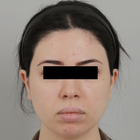
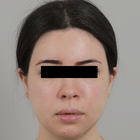
Front view


Front view
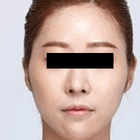

Front view
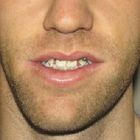

Front view
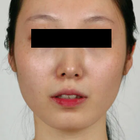
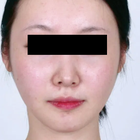
Front view
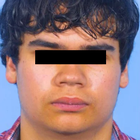
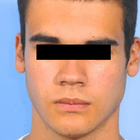
Front view

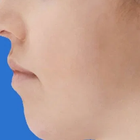
Full-side view
WHY US?
At Medijump, we're making medical easy. You can search, compare, discuss, and book your medical all in one place. We open the door to the best medical providers worldwide, saving you time and energy along the way, and it's all for FREE, no hidden fees, and no price markups guaranteed. So what are you waiting for?

Free

Best Price

Widest Selection

Risk-Free
What you need to know about Jaw Shaping in Germany
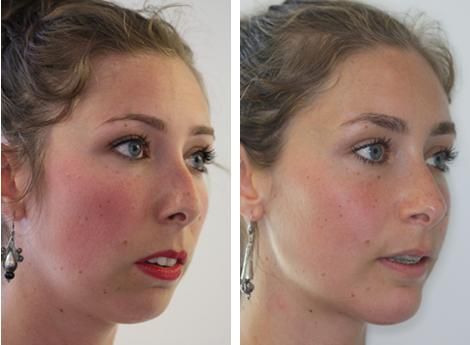
Also known as Mandibular Angle Reduction, V Line Surgery or Jawline Surgery, Jaw Shaping Surgery is performed with the purpose of narrowing the lower part of the face, with particular emphasis on the mandible (lower jaw) and the muscular attachments.
A wide jaw angle can be caused by enlarged muscle, bone, or a combination of the two. A prominent jaw angle or square jaw is considered a masculine trait, particularly in Asian countries. Therefore, many people opt for surgical correction to get their desired look. The surgery can shorten an overly long jaw and change a square-shaped face to an oval shape. Some people with temporomandibular joint (TMJ) disorders, uneven jaws, or jaws that causes pain when chewing might also undergo this surgery to correct pain.
There are several critical elements involved in the surgery, including the angles of the jaw, the body of the mandible, and the shape of the chin. While the procedure is typically performed on women with a square jawline who want a more feminine look, it can be done on both men and women. However, this procedure may not work for people who want to feminize a male’s face since males usually have a taller and longer face. Therefore, a V Line Surgery would only make a face look more elongated.
What does a Jaw Shaping Procedure Involve?
Various developmental, congenital, or some rare disorders such as acromegaly can cause enlarged mandibles, which can be corrected by Jawline Surgery. It is ideal for those with overly square or U-shaped jawline, overly manly jaw shape, bloated cheeks, and double chin. If you are considering V line surgery, you will need to be in a good state of physical and mental health.
Prior to the surgery, you will be examined by X-rays and 3D CT scans. Your surgeon will analyze and evaluate the overall structure of your jaw to create a plan to produce the desired result. You will also need to undergo medical tests such as ECGs to ensure that you don’t have a condition that may put you in danger or compromise the success of the surgery.
Surgery is performed under general anesthetic through tracheal intubation and leaves minimal scarring. You will need to fast for 8 hours before the surgery. Oscillating saws are used to reshape the jaw. The surgery can be performed inside the mouth (intraoral) or from outside the mouth (postauricular). The intraoral approach is the most widely used method. With this approach, an incision is made between the gum and the back of the cheek next to the jaw. Then, the jawline is carved out into their desired shape. A portion of the masseter muscle is shaved off, and the outer portion of the bone is chipped off. This approach is best for patients who aim to narrow their frontal view since the change is subtle and natural.
If the patient wants to change the appearance of the jaw angle from a side view, the overall contour of the bone will need to be changed. This means that the patient needs a full-thickness bone removal. Although it can be done through the intraoral approach, the surgeon’s view during this approach is very limited, which can decrease the precision of the procedure. Therefore, the best approach is from outside of the mouth or postauricular. To get direct access to the bone, the surgeon makes an incision hidden around the ear. This approach can remove a more substantial amount of bone. The recovery time using this approach is also much shorter than the intraoral approach since the swelling stays confined to the neck area.
How Long Should I Stay in Germany for a Jaw Shaping Procedure?
The typical length of time for Jaw Shaping is usually around 2 hours. Nevertheless, you have to stay in the hospital for around one to two days for initial recovery where you will be monitored to make sure everything is fine. After being discharged, plan to stay in the Germany for 10 to 14 days or until the surgeon says you can go home. The stitches are generally removed within two weeks after surgery, though this may vary from patient to patient.
What's the Recovery Time for Jaw Shaping Procedures in Germany?
Immediately after the surgery, you will need to wear a facial mask that presses tightly against the skin around the jaw to keep the post-surgery swelling down. Also, you will not be allowed to eat foods that require chewing because it will delay the recovery and can cause bleeding. If you undergo the intraoral approach, your food intake will be limited for a considerable length of time. You may feel some swelling, numbness, and discomfort around the incision for several days, but the surgeon will prescribe medications to help with the pain.
The recovery period can be different for each individual; some people may be able to go back to their regular routines after seven to ten days, but others may need more time to fully recover. Avoid doing any vigorous activity that increases your blood pressure for several weeks, such as jogging and other exercises. Most of the visible signs, such as swelling and bruising, should disappear within a few weeks. Symptoms such as hematoma and infection are common, and will usually subside within three to six months post-surgery.
What sort of Aftercare is Required for Jaw Shaping Procedures in Germany?
You must follow your surgeon aftercare instructions strictly to accelerate your recovery and minimalize possible complications. The instruction will likely include the following recommendations:
- Food intake. You may need to consume a liquid diet for a week after surgery as drinking your food is less painful and prevents trauma to the jaw area. You should be able to consume hard foods within one month.
- Oral hygiene. An antibacterial mouth rinse will keep your mouth and incision area clean, which will decrease the possibility of infection.
- Avoid tobacco and alcohol. Smoking and drinking alcohol should be avoided for a while.
- Keep the head elevated. You should keep your head elevated even when you are sleeping as it is the key to reduce swelling.
- Compression bandage. You are recommended to wear a compression bandage at all times for the first three days and while sleeping for the first week or two.
- Avoid strenuous activity. Do not do any heavy lifting or exercise for at least a month. However, do walk around and practice some gentle movement.
- Attend follow up appointments. The surgeon will check your progress to avoid any complications.
What's the Success Rate of Jaw Shaping Procedures in Germany?
Jaw shaping surgery is a safe procedure when performed by a trained surgeon. Around 94% of patients express their satisfaction with this procedure. However, it is important to have realistic expectations. You should also be aware of the possible risks that this surgery may cause. These risks include infection, asymmetry, seroma, deep vein thrombosis, pulmonary embolism, and hematoma. Partial numbness of the jaw can also happen due to nerve damage.
Are there Alternatives to Jaw Shaping Procedures in Germany?
If you wish to reshape your jaw but do not want to undergo surgery, there are non-invasive options available. The most popular alternatives are Botox and Dysport, which can effectively contour the jaw by relaxing the appearance of a square jaw. This procedure shrinks the masseter muscle by weakening it. These injectable can also be used to correct facial asymmetry around the jawline area. Since they are non-invasive, you can return to your daily activates right away and they offer a subtler shift in your appearance. However, these techniques are limited to cases in which the masseter is enlarged and may not work as well as V Line Surgery.
Whilst the information presented here has been accurately sourced and verified by a medical professional for its accuracy, it is still advised to consult with your doctor before pursuing a medical treatment at one of the listed medical providers
No Time?
Tell us what you're looking for and we'll reachout to the top clinics all at once
Enquire Now

Popular Procedures in Germany
Prices Start From $70

Prices Start From $28

Prices Start From $1,945

Prices Start From $275

Recommended Medical Centers in Germany for procedures similar to Jaw Shaping

- Interpreter services
- Translation service
- Religious facilities
- Medical records transfer
- Medical travel insurance
- Health insurance coordination
- TV in the room
- Safe in the room
- Phone in the room
- Private rooms for patients available

- Interpreter services
- Translation service
- Religious facilities
- Medical records transfer
- Medical travel insurance
- Health insurance coordination
- TV in the room
- Safe in the room
- Phone in the room
- Private rooms for patients available

- Interpreter services
- Translation service
- Religious facilities
- Medical records transfer
- Medical travel insurance
- Health insurance coordination
- TV in the room
- Safe in the room
- Phone in the room
- Private rooms for patients available

- Interpreter services
- Translation service
- Religious facilities
- Medical records transfer
- Medical travel insurance
- Health insurance coordination
- TV in the room
- Safe in the room
- Phone in the room
- Private rooms for patients available

- Interpreter services
- Translation service
- Religious facilities
- Medical records transfer
- Medical travel insurance
- Health insurance coordination
- TV in the room
- Safe in the room
- Phone in the room
- Private rooms for patients available

- Interpreter services
- Translation service
- Religious facilities
- Medical records transfer
- Medical travel insurance
- Health insurance coordination
- TV in the room
- Safe in the room
- Phone in the room
- Private rooms for patients available

- Interpreter services
- Translation service
- Religious facilities
- Medical records transfer
- Medical travel insurance
- Health insurance coordination
- TV in the room
- Safe in the room
- Phone in the room
- Private rooms for patients available

- Interpreter services
- Translation service
- Religious facilities
- Medical records transfer
- Medical travel insurance
- Health insurance coordination
- TV in the room
- Safe in the room
- Phone in the room
- Private rooms for patients available

- Interpreter services
- Translation service
- Religious facilities
- Medical records transfer
- Medical travel insurance
- Health insurance coordination
- TV in the room
- Safe in the room
- Phone in the room
- Private rooms for patients available

- Interpreter services
- Translation service
- Religious facilities
- Medical records transfer
- Medical travel insurance
- Health insurance coordination
- TV in the room
- Safe in the room
- Phone in the room
- Private rooms for patients available
Jaw Shaping in and around Germany
About Germany
Germany, a titan in Central Europe and a vital constituent of the European Union, enjoys the reputation of having the finest healthcare system across the continent. Medical tourists often choose Germany due to its unrivaled service quality over cost, with Jaw Shaping procedures being the most in-demand.
Prices here exhibit a significant hike when compared to the neighboring countries of Poland and Hungary. Germany, despite housing just two JCI accredited facilities, places considerable trust in its local accreditation bodies.
This includes institutions such as the German Institute for Standardisation, the Telemedicine for the Mobile Society (TEMOS), and the Cooperation for Quality and Transparency in Healthcare (KTQ-GmBH). The language barrier is virtually non-existent as the majority of the doctors and medical staff exhibit proficiency in English. Beyond the capital city of Berlin, Munich, Hamburg, and Frankfurt are popular delectations among medical tourists.
Popular Parts of Germany
Home to an approximate 83 million inhabitants, Germany stands tall as the second most populated nation in Europe. The country presents a fascinating blend of deep-rooted history and cutting-edge technology. Visitors can pay their respects at numerous WWII memorials and museums, bask in the allure of the country's picturesque natural landscapes, or surrender to the tantalizing array of culinary delights that Germany has to offer. Truly, Germany embraces diverse interests, ensuring every traveller finds something to cherish.
- Berlin is Germany’s capital city. It is a vibrant city with diverse sights to see. Visit the glass dome of The Reichstag, take a walk through Brandenburg Gate, be inspired by Berlin Cathedral, or wander around a UNESCO World Heritage Site: Museumsinsel (Museum Island).
- Munich is home to a beautiful historic city center, futuristic drives, and outdoor fun. For a historical tour, tourists can travel to the Church of St. Peter, the city’s oldest parish church dating back six centuries. For a car lover, visit the BMW Museum to learn more about the history of BMW cars and motorcycles. For outdoor activity, tourists can surf at the Eisbach wave on the Isar river.
- Hamburg provides refreshing sea air. The city was labeled as “the gateway to the world” because it is a center of international trade. As the city revolves around water, tourists should stroll around the harbor, lay around beside the Elbe, or sail on the Outer Alster lake.
- Frankfurt am Main is the financial and business hotspot of Germany. Although it is packed with skyscrapers, the city still offers amazing architecture, a piece of history, and even a large green space in the city forest.
- Hanover calls itself as the “EXPO City” because it hosts several of the biggest exhibition in the world. The city also boasts an astonishing blend of modern and ancient. There are a number of museums and galleries, a large zoo, and innovative street art for tourists to explore.
Weather and Climate in Germany
The four distinct seasons make Germany a year-round destination for tourists. The summer starts in June and ends in August. The average temperature is 24 °C, sometimes even as high as 30 °C. People tend to enjoy outdoor activities during this season. This is also the most popular time to visit and peak travel season, so prices can be higher than usual.
Autumn graces Germany in the months of September and October. During this time, the weather is comfortably warm, closely mirroring that of summer. However, by mid-November, a notable drop in temperatures can be expected. This period is particularly popular among tourists owing to the much-celebrated Oktoberfest.
Winter in Germany, which runs from December through February, can be chilling with temperatures dropping to as low as -10°C. Yet, the festive vibrancy brought on by the Christmas season often offsets the cold. Visitors planning a trip during winter must ensure to pack ample warm clothing for a comfortable experience.
Spring in Germany marks the delightful bloom of cherry blossoms and typically spans from March through May. The transition into this season often ushers in a rapid rise in temperatures, making it a beautiful and warm period to visit.
Getting around in Germany
Frankfurt Airport is the largest airport in Germany. The airport serves domestic flights as well as international flights. It connects the country with almost every country in the world. The airport is the hub for Condor and Lufthansa. It also serves budget airlines such as Ryanair, Euro wings, Wizz Air. Düsseldorf International Airport and Munich Airport also receive their shares of international flights.
Train, bus, and taxi are the best options to get to the city center from Frankfurt Airport. A trip by train usually costs 4.65 EUR and takes around 40 minutes. Train tickets need to be punched, otherwise, you can get a 50 EUR fine. The bus costs 4.35 EUR and takes around 30 minutes. Buses that take tourists to the city center are No. 61, 77, 72, 58, 62, N81 and N7. Taxis are not very cheap, it will cost around 25 EUR and will take approximately 20 to 30 minutes to the city center.
As the creator of the first highway system, Germany has some of the best public transportation in the world. The public transportation is integrated with one ticket that gives tourists access to buses, trams, U-Bahn trains, and S-Bahn trains. A one-way fare starts from 2.90 EUR. It is better to get a one-day unlimited pass for 7 EUR or three days for 17 EUR.
Train travel is very efficient and affordable. Germany rail system has both high-speed trains and regular trains. High-speed trains are very fast but much more expensive. It’s advised to book train tickets in advance. Buses are the most cost-effective way to get around Germany although it is not as efficient as the train. Buses here are comfortable with air-conditioning and rest stops.
Taxis in Germany are expensive. All taxis are metered and start with a base fare of around 3.70 EUR. There is no Uber in the country, but tourists can use the MyTaxi App. If you want to get around the city, the best way is to rent a bicycle. Most cities are equipped with well-marked bicycle lanes.
Tourist Visas in Germany
Germany extends a cordial welcome to citizens from numerous nations, offering them visa-free entry. This privilege applies to travelers from Australia, New Zealand, Canada, Israel, Japan, Poland, the United States, and Switzerland, who are invited to stay for up to 90 days without the need for a visa.
Moreover, as a member of the European Union (EU), Germany adheres to the policy of open borders with its fellow EU nations. Consequently, EU citizens can freely travel to and enter Germany without any requirement for a visa. This ease of movement provides an added advantage for those wishing to visit Germany, whether for business, leisure, or medical purposes.
Citizens of other countries need a Schengen Visa. The application for a Schengen Visa must be filed with the embassy of the country of your primary destination. It is best to always check the requirements for Germany Visa Application before applying.
Additional Information
- Local Currency: the local currency is the euro (EUR). 1 USD converts to 0.94 EUR.
- Money & Payments: ATMs are easily available across the country. The easiest way to obtain cash is to use an ATM linked to international networks. Credit cards are not widely accepted in Germany, so always make sure to carry some cash. Some hotels, shops, and restaurants will accept credit cards. Tipping 1 EUR to room cleaners or porters is common. Most people add 5% or 10% tip in restaurants and bars. Tourists can tip about 10% to taxi drivers.
- Local Language: The official language is German. It is nice to know a little German to show respect. Many Germans in major cities and tourist areas will know a little English.
- Local Culture and Religion: 57% of Germany’s population follows Christianity, making it the largest religion in the country. Islam is the second largest religion. Buddhism, Judaism, Hinduism are also practiced.
- Public Holidays: Germany celebrates Christian religious holidays. The country hosts several festivals such as Maibaumaufstellung every 1st May and Oktoberfest in October.
Popular Searches
- Plastic Surgery in Thailand
- Dental Implants in Thailand
- Hair Transplant in Thailand
- Breast Augmentation Thailand
- Gastric Sleeve in Thailand
- Gender Reassignment Surgery in Thailand
- Laser Hair Removal in Bangkok
- Botox in Bangkok
- Dermatology in Bangkok
- Breast Augmentation in Bangkok
- Coolsculpting in Bangkok
- Veneers in Turkey
- Hair Transplant in Turkey
- Rhinoplasty in Turkey
- Stem Cell Therapy in Mexico
- Rhinoplasty in Mexico
- Liposuction in Mexico
- Coolsculpting in Tijuana
- Rhinoplasty in Korea
- Scar Removal in Korea
- Gastric Sleeve in Turkey
- Bone Marrow Transplant in India
- Invisalign in Malaysia
- Plastic Surgery in the Dominican Republic
- Tummy Tuck in the Dominican Republic
- Plastic and Cosmetic Surgery in Poland
- Rhinoplasty in Poland
- Hair Implant in Poland
- Dental Implants in Poland
- IVF in Turkey